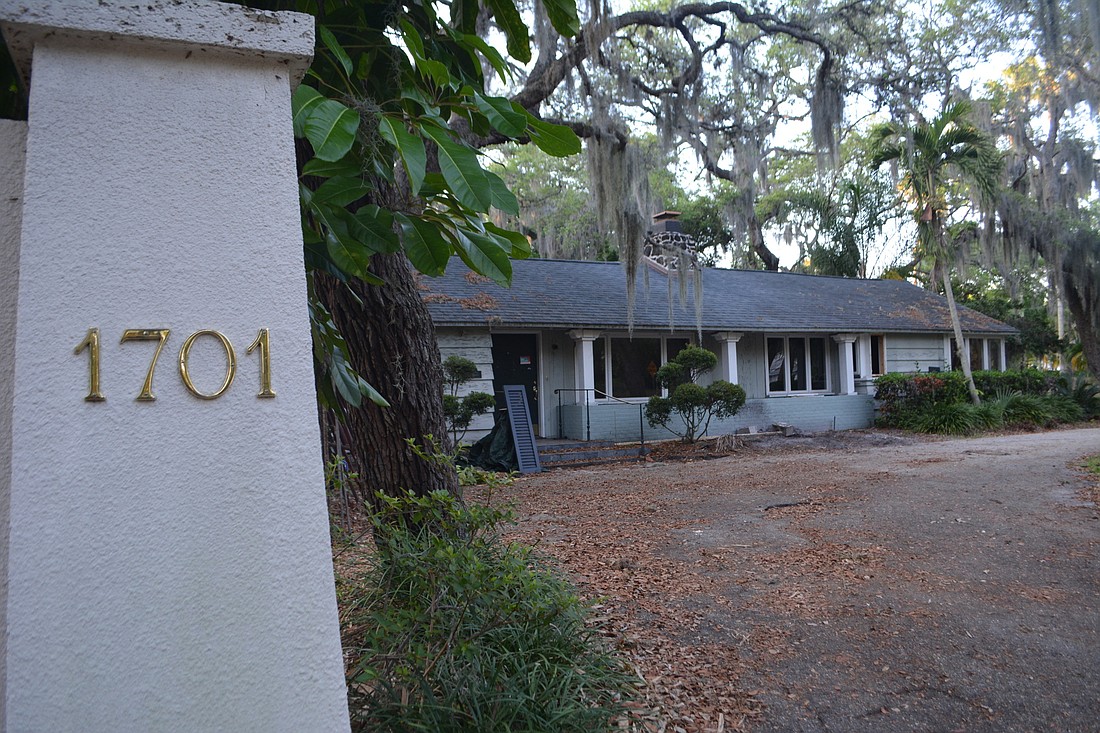- July 11, 2025
-
-
Loading

Loading

Is the home at 1701 Hashay Drive in McClellan Park historically significant and worthy of preservation?
That’s a question that’s drawn opposing responses at City Hall over the past two months after the property owner applied to demolish the three-bedroom, 3,383-square-foot structure. City staff said the answer was no, recommending approval of the permit. The city’s Historic Preservation Board disagreed, voting unanimously to reject the proposed demolition in February. The City Commission overruled the Historic Preservation Board on April 6, siding with the owner in a 4-1 vote.
The planned demolition has not been the only subject of disagreement regarding the house. City staff and historic preservation advocates have offered different accounts of who designed it, when it was constructed, whether it was the first home of its kind in Sarasota and whether it is an exemplary work of a distinct architectural style.
In the opinion of city staff — and a majority of the City Commission, the final arbiters on the topic — the home did not meet standards for preserving a building not already designated as a historic structure. For preservationists, the decision to authorize the demolition represented a disregard for expert testimony and indifference toward a piece of Sarasota’s architectural legacy.
At the center of the case for preserving the home is the building’s designer.
Lorrie Muldowney, president emeritus of the Sarasota Alliance for Historic Preservation, said the home was designed by Ralph Twitchell, a key figure in establishing the mid-century Sarasota School of Architecture style. Muldowney also said the house was the first ranch-style home built in the city.
The home is on the Florida Master Site File, an index of structures older than 50 years that may carry historic significance. The Florida Master Site File indicates the home is an example of the Sarasota School of Architecture and Brutalism styles of design, and that it could be a contributing resource toward a historic district in McClellan Park.
“This is like foreshadowing Sarasota School of Architecture,” said Christopher Wilson, the immediate past chair of the board of the Sarasota Architectural Foundation. “You might not think it’s a big deal, but it was like the germ which then eventually grew into the Sarasota School.”
Clifford Smith, a senior planner who oversees the city’s historic preservation efforts, said the information on file with the city failed to support the narrative against demolishing the building. He said there was no concrete evidence Twitchell actually designed the home, stating the Hashay Drive house may have been confused with a single-story residence the architect designed on Siesta Key. Furthermore, he said the Florida Master Site File was mistaken in calling it a Sarasota School and Brutalist work, because it was a ranch-style home that predates the inception of the Sarasota School of Architecture.
Smith said the structure has been meaningfully altered on multiple occasions — another claim the preservationists contested — and that there were 15 ranch-style homes that predate the Hashay Drive house. He said the home did not count as a contributing structure to a historic district because no McClellan Park historic district exists today. Smith concluded that the structure was not eligible for local designation as a historic structure.
Although Commissioner Jen Ahearn-Koch objected to the demolition, the rest of the board found Smith’s case satisfactory.
“I am a big proponent of historic preservation, but some structures just don’t meet the criteria,” Commissioner Liz Alpert said. “This is one that does not.”
Following the commission’s vote, preservationists continued to express dismay at the decision to authorize the demolition permit for construction of a new single-family home. Erin DiFazio, the president of the Sarasota Alliance for Historic Preservation, said she didn’t understand why city staff deemed the evidence shared about Twitchell’s involvement insufficient. She also pushed back on the idea the home did not merit saving even if Twitchell was the architect, stating the community would benefit from maintaining more of its built environment whenever possible.
“The fact of the matter is that our history needs to be preserved — not just the mansions and the wealthiest, but the history of the community at large,” DiFazio said.